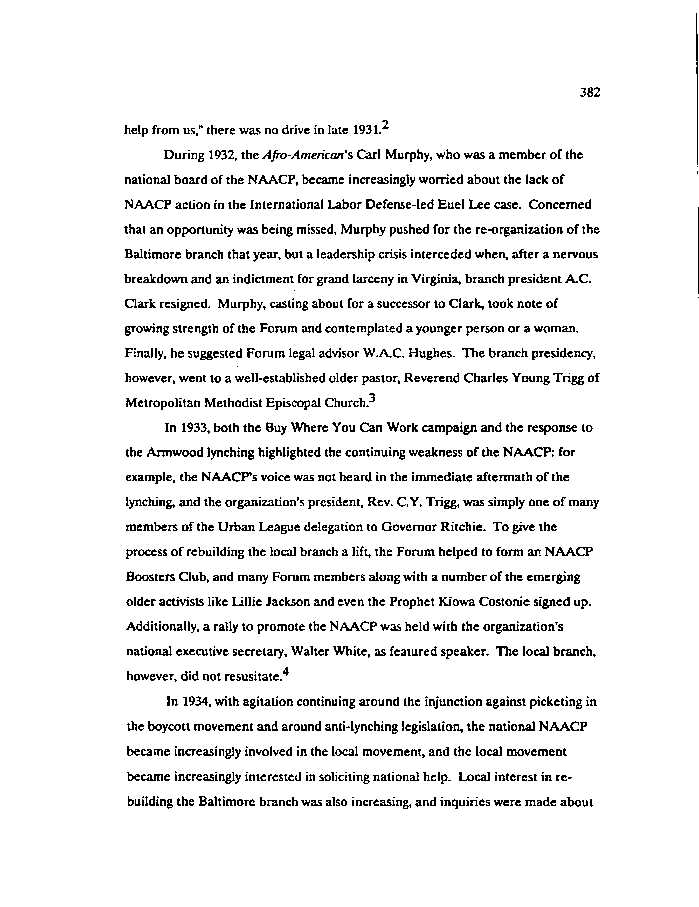|
382
"\
help from us," there was no drive in late 1931.
During 1932, the Afro-American's Carl Murphy, who was a member of the
national board of the NAACP, became increasingly worried about the lack of
NAACP action in the International Labor Defense-led Euel Lee case. Concerned
that an opportunity was being missed, Murphy pushed for the re-organization of the
Baltimore branch that year, but a leadership crisis interceded when, after a nervous
breakdown and an indictment for grand larceny in Virginia, branch president A.C.
Clark resigned. Murphy, casting about for a successor to Clark, took note of
growing strength of the Forum and contemplated a younger person or a woman.
Finally, he suggested Forum legal advisor W.A.C. Hughes. The branch presidency,
however, went to a well-established older pastor. Reverend Charles Young Trigg of
Metropolitan Methodist Episcopal Church/*
In 1933, both the Buy Where You Can Work campaign and the response to
the Arrnwood lynching highlighted the continuing weakness of the NAACP: for
example, the NAACP's voice was not heard in the immediate aftermath of the
lynching, and the organization's president, Rev. C.Y. Trigg, was simply one of many
members of the Urban League delegation to Governor Ritchie. To give the
process of rebuilding the local branch a lift, the Forum helped to form an NAACP
Boosters Club, and many Forum members along with a number of the emerging
older activists like LJllie Jackson and even the Prophet Kiowa Costonie signed up.
Additionally, a rally to promote the NAACP was held with the organization's
national executive secretary, Walter White, as featured speaker. The local branch,
however, did not resusitate.
In 1934, with agitation continuing around the injunction against picketing in
the boycott movement and around anti-lynching legislation, the national NAACP
became increasingly involved in the local movement, and the local movement
became increasingly interested in soliciting national help. Local interest in re-
building the Baltimore branch was also increasing, and inquiries were made about
|

